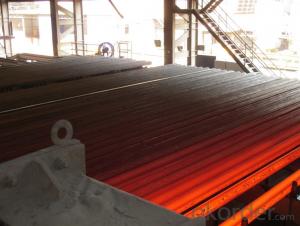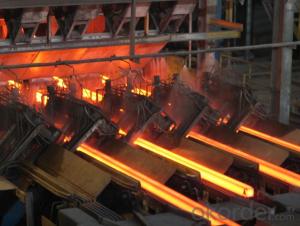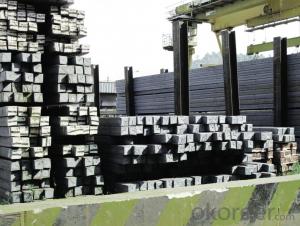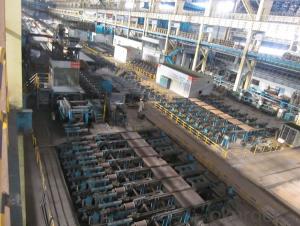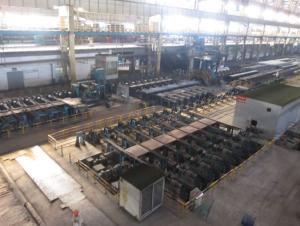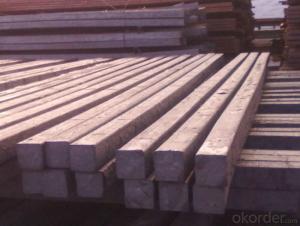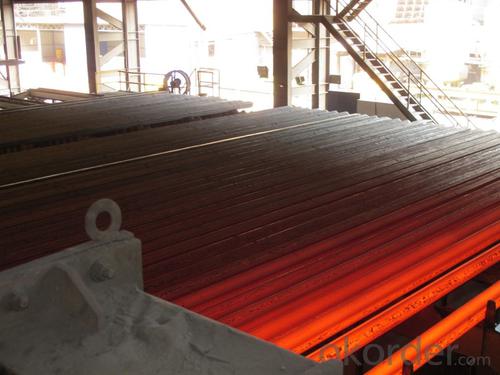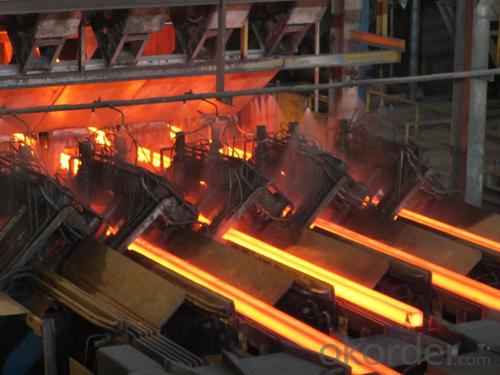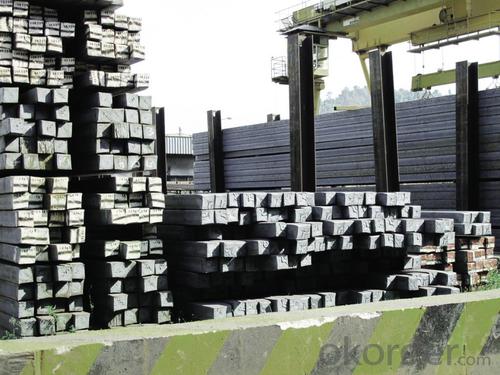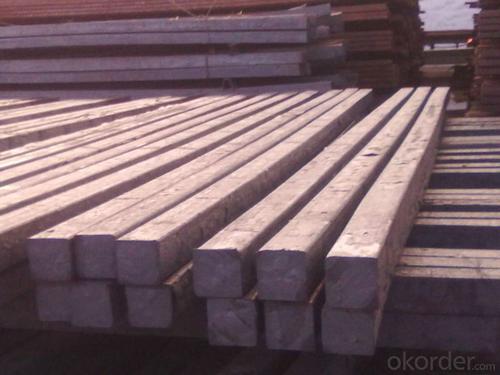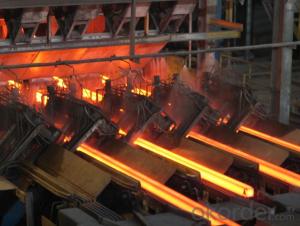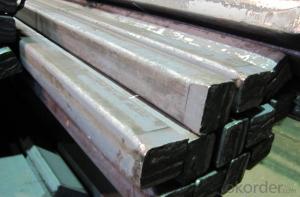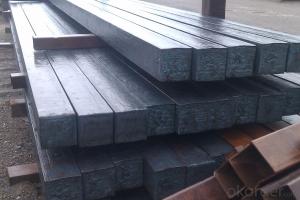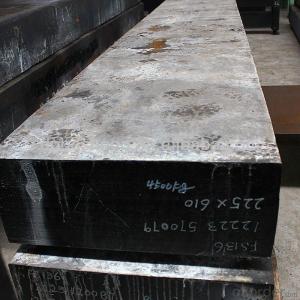Hot Rolled Steel Billet 3SP Standard 105mm
- Loading Port:
- Shanghai
- Payment Terms:
- TT OR LC
- Min Order Qty:
- 100 m.t.
- Supply Capability:
- 10000 m.t./month
OKorder Service Pledge
OKorder Financial Service
You Might Also Like
Structure of Hot Rolled Steel Billet 3SP Standard 105mm

Description of Hot Rolled Steel Billet 3SP Standard 105mm
Prepainted Rolled steel Coil is a kind of coated steel coil/sheet. With the cold rolled steel of different strength and thickness as substrate, it is produced through applying Al-Zn coat on both faces by hot dip process. In its coating, Al accounts for about 55%, Si 1.6%, while the remaining is Zn. Aluminum zinc coils enjoys both the physical protective feature and durability of Al and the electrochemical protective property of Zn. And its surface has bright silver color and regular embossed-like figure, which are highly decorative. RAL Scale Z35 Prepainted Rolled Steel Coil for Construction Roofing

Main Feature of Hot Rolled Steel Billet 3SP Standard 105mm
1.Corrosion resistance: It mainly depends on the zinc protection. When the zinc being worn,
2. Heat resistance: steel sheet has excellent heat resistance, can withstand high temperatures over 300 centigrade, and is similar with aluminized steel high temperature oxidation resistance. It often used in chimney pipes, ovens, fluorescent lighting device and the device cover.
3. Heat reflective: Galvanized steel plate heat-reflective high rate is twice as galvanized steel, often used to make insulation materials. RAL Scale Z35 Prepainted Rolled Steel Coil for Construction Roofing
Applications of Hot Rolled Steel Billet 3SP Standard 105mm
1. Construction and building: roofing; ventilating duct; handrail; partition panel;etc.
2. Electric appliance: refrigerator; washing machine; refrigerator; DVD;etc.
3.Transportation: oil tank; gas tank;road sign; etc.
4.Agriculture constructions :barn; etc.RAL Scale Z35 Prepainted Rolled Steel Coil for Construction Roofing
5.Others:vending machine; game machine; auto parts spare parts etc.
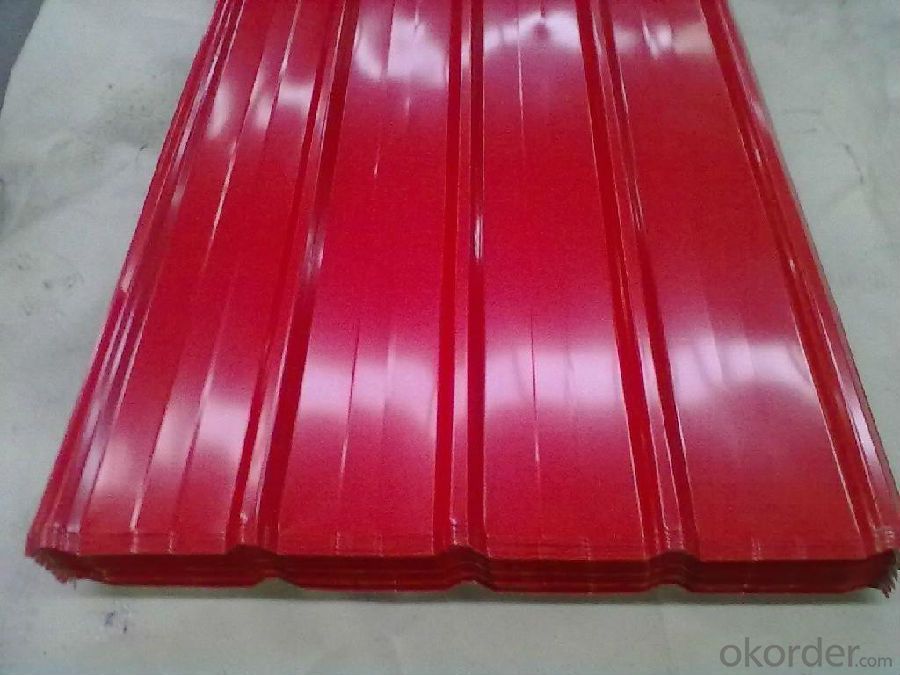
Specifications of Hot Rolled Steel Billet 3SP Standard 105mm
Product | Hot Rolled Steel Billet 3SP Standard 105mm |
Material Grade | SGCC / SGCH / DX51D+AZ, etc |
Thickness | 0.5-3.0mm |
Width | 700-1500mm |
Tolerance | Thickness: +/-0.02mm , Width:+/-2mm |
Zinc-coating | AZ30-150g/m2 |
Technique | Raw material: Hot rolled steel coil --> Cold rolled_>hot dipped galvalume |
Surface | Dried, Chromated, Unoiled,RAL Scale Z35 Prepainted Rolled Steel Coil for Construction Roofing |
Spangle | Regular spangle , small spangle, zero spangle |
ID | 508MM 610MM |
Coil weight | 25MT max |
Export package | Cardboard inner sleeves, Waterproof paper, galvanized steel covered and steel strip packed |
FAQ of Hot Rolled Steel Billet 3SP Standard 105mm
We have organized several common questions for our clients,may help you sincerely:
1. What is the minimum order quantity ?
Our MOQ is 100 mt for each size each specification. Usually we can offer discount if can buy large QTY once. RAL Scale Z35 Prepainted Rolled Steel Coil for Construction Roofing
2. How long can we receive the product after ordering?
Our general delivery time is 30 days after confirmation, but so some special orders, we have offer special delivery time
3. How to guarantee the quality of the products?
We have established the international advanced quality management system ,every link from raw material to final product we have strict quality test;We resolutely put an end to unqualified products flowing into the market. At the same time, we will provide necessary follow-up service assurance.
4. What is the payment?
We accept T/T, L/C
- Q: How are steel billets used in the production of wind turbine towers?
- Steel billets are used in the production of wind turbine towers as they serve as the primary raw material. These billets are heated and then shaped into the required cylindrical or conical form, which is essential for the structural integrity of the tower. The billets are then welded together to form the tower sections, which are further assembled and erected to support the wind turbine components.
- Q: How are steel billets used in the production of automotive braking systems?
- The production of automotive braking systems heavily relies on steel billets, which serve as a vital ingredient. These billets, essentially semi-finished steel products, act as the raw material for further processing. Typically, they are created through the casting process, in which molten steel is poured into molds and allowed to solidify. In the realm of automotive braking systems, steel billets are primarily utilized for the manufacturing of brake rotors or discs. These components play a critical role as they provide the surface on which the brake pads make contact, generating friction and ultimately halting the vehicle. Due to the intense stress and heat experienced during braking, brake rotors require a material that is strong, durable, and heat-resistant – qualities that steel possesses. Once the steel billets are acquired, they undergo a series of manufacturing processes to transform them into brake rotors. Initially, the billets are heated to a specific temperature, enhancing their malleability and making them easier to shape. Subsequently, a process known as forging is employed, subjecting the heated billets to high pressure in order to mold them into the desired form of the brake rotor. This forging process strengthens and fortifies the steel, rendering it resistant to wear and deformation. Following the forging stage, the brake rotor undergoes additional machining processes. This includes the turning of the rotor's surface to ensure it is flat and smooth, providing an even contact surface for the brake pads. Further modifications, such as drilling or slotting, may be performed to enhance heat dissipation and prevent the accumulation of gases or debris between the pad and rotor. These machining processes are vital for achieving the necessary dimensions and surface finish of the brake rotor. Once the brake rotor is manufactured, it is then assembled alongside other components of the braking system – brake calipers, pads, and hydraulic lines – to create a fully functional braking system. The utilization of steel billets in the production of brake rotors guarantees a reliable, durable, and capable braking system that can withstand the demanding conditions of automotive braking. In conclusion, steel billets are indispensable in the production of automotive braking systems, serving as the foundation for the creation of brake rotors – key components responsible for halting vehicles. Through processes such as heating, forging, and machining, the billets are transformed into robust and finely finished brake rotors. The end result is a dependable and long-lasting braking system that ensures vehicle safety and performance.
- Q: What is the difference between carbon three plants and carbon four plants?
- The mesophyll cells of carbon three plants are more dispersed, and there are no chloroplasts in bundle sheath cells. Photosynthesis is only carbon three cycle, and the utilization rate of carbon dioxide is low. It usually lives in temperate zone.Four carbon plant mesophyll cells arranged regularly, the formation of two circles of the "ring" and bundle sheath cells, bundle sheath cells have no chloroplast grana, photosynthesis has three carbon cycle and carbon cycle four, higher utilization rate of carbon dioxide, the general life in tropical and subtropical regions.The initial product of CO2 assimilation is not photosynthetic carbon cycle in three carbon compounds 3- phosphoglycerate, but four carbon compounds malic acid or aspartic acid plant.
- Q: What are the different packaging options available for steel billets?
- There are several packaging options available for steel billets, including wooden crates, steel frames, and bundles with steel straps. These packaging options provide protection during transportation and storage, ensuring the integrity and quality of the steel billets.
- Q: What is alpha carbon? What is beta carbon?
- The C atom separated from the functional group is called C beta atom, and alpha carbon and beta carbon are not unique
- Q: What is the role of steel billets in the production of steel bars?
- Steel billets play a crucial role in the production of steel bars. They are semi-finished forms of steel that are typically cast in a square or rectangular shape. These billets serve as the starting material for the production of various steel products, including steel bars. The primary purpose of steel billets is to be further processed and transformed into steel bars through a series of manufacturing steps. Once the steel billets are obtained, they undergo a process known as hot rolling. This involves subjecting the billets to high temperatures and passing them through rolling mills, where they are shaped and elongated into the desired form, such as round bars, square bars, or hexagonal bars. During the hot rolling process, the steel billets are subjected to extreme heat and pressure, causing them to deform and elongate. This process helps to improve the mechanical properties of the steel, such as strength, toughness, and ductility. It also refines the grain structure of the steel, enhancing its overall quality and performance. Steel bars produced from steel billets find wide applications in various industries, such as construction, manufacturing, infrastructure, and automotive. They are widely used as structural components in buildings, bridges, and other infrastructure projects, as well as in the production of machinery, tools, and equipment. In summary, steel billets play a critical role in the production of steel bars. They serve as the starting material for the manufacturing process, undergoing hot rolling to transform them into the desired shape and size. The resulting steel bars are then used in a wide range of applications due to their enhanced mechanical properties and improved quality.
- Q: How are steel billets used in the production of oil and gas equipment?
- The production of oil and gas equipment heavily relies on steel billets, which act as vital components. These semi-finished steel products typically possess a square or rectangular shape and serve as the primary raw material for manufacturing various oil and gas equipment. Primarily, steel billets find their application in pipe production, playing a crucial role in the transportation of oil and gas from extraction sites to refineries or distribution points. After being heated, the billets are rolled into seamless or welded pipes, depending on specific requirements. These pipes are specially designed to endure high pressure, corrosive environments, and extreme temperatures, thus making them suitable for transferring oil and gas across long distances through pipelines. Furthermore, steel billets are utilized in the creation of valves and fittings, integral components of oil and gas equipment. Valves facilitate the control of oil and gas flow within pipelines, allowing for regulation and shut-off when necessary. On the other hand, fittings, such as connectors and couplings, ensure the proper connection and alignment of different pipe sections. Manufacturing these components typically involves forging or machining steel billets to guarantee strength, durability, and resistance to harsh operating conditions. In addition to pipes and valves, steel billets also play a significant role in the production of drilling equipment, including drill bits, drill collars, and drill pipes. These components are subjected to extreme forces and abrasive environments during the drilling process. To withstand such demanding conditions encountered during oil and gas exploration, steel billets undergo forging, heat treatment, and machining processes. In conclusion, the significance of steel billets in the oil and gas industry cannot be overstated. Their application in the manufacturing of pipes, valves, fittings, and drilling equipment is vital for the extraction, transportation, and processing of oil and gas. The exceptional strength, durability, and resistance to harsh conditions possessed by steel billets make them an ideal choice for constructing reliable and efficient oil and gas equipment.
- Q: How are steel billets used in the manufacturing of electrical appliances?
- Steel billets are used in the manufacturing of electrical appliances as a primary raw material for various components, such as casings, frames, and supports. These billets are first heated and then shaped through processes like rolling or extrusion to create the desired parts. The strength, durability, and conductivity of steel make it an ideal material choice for ensuring the structural integrity and efficient functioning of electrical appliances.
- Q: How do steel billets contribute to the infrastructure development sector?
- Steel billets play a crucial role in the infrastructure development sector in several ways. Firstly, steel billets are the primary raw material used in the production of various construction materials such as rebars, beams, and columns. These materials are essential for the construction of buildings, bridges, roads, and other infrastructure projects. The use of steel billets ensures the strength, durability, and stability of these construction materials. Steel has exceptional tensile strength, which makes it ideal for withstanding heavy loads and adverse weather conditions. This, in turn, contributes to the safety and longevity of infrastructure projects. Moreover, steel billets are versatile and can be easily customized according to specific project requirements. They can be shaped into different forms and sizes, allowing engineers and architects to design structures with precision and efficiency. This flexibility enables the construction industry to create complex and innovative designs, enhancing the overall aesthetic appeal of infrastructure projects. Steel billets also contribute to the sustainability of the infrastructure development sector. Steel is a highly recyclable material, and the use of recycled steel reduces the demand for virgin materials and minimizes environmental impact. Additionally, steel structures can be dismantled and reused in other projects, promoting resource efficiency and reducing waste. Furthermore, the availability and affordability of steel billets make them an attractive choice for infrastructure development. Steel is widely produced and distributed, ensuring a steady supply for construction projects. The cost-effectiveness of steel billets allows for the construction of infrastructure projects within budget constraints, ensuring cost efficiency for both private and public investments. In conclusion, steel billets play a vital role in the infrastructure development sector by providing the necessary raw material for construction materials, ensuring strength and durability, allowing for customization and innovation, promoting sustainability, and offering cost-effectiveness. The use of steel billets contributes significantly to the growth and advancement of the infrastructure sector, enabling the construction of safe, resilient, and visually appealing structures that support economic development and improve the quality of life for communities.
- Q: How do steel billets contribute to the overall weight reduction of a product?
- A product's overall weight reduction is achieved through several key factors, with steel billets playing a significant role. Firstly, steel billets are manufactured using either hot rolling or continuous casting, allowing for precise control over the final product's dimensions and shape. This results in steel billets with a high strength-to-weight ratio, ensuring excellent structural integrity despite their relatively lightweight nature. Furthermore, steel billets can be further processed and formed into various components of a product, such as sheets, plates, or bars. These components can be optimized to have thinner cross-sections or hollow sections, effectively reducing weight without compromising overall strength and performance. This weight reduction is particularly advantageous in industries where lightweight materials are sought after, such as automotive, aerospace, or construction. Moreover, steel billets can also be utilized in the production of advanced high-strength steels (AHSS) or ultra-high-strength steels (UHSS). These steels possess exceptional mechanical properties, including high tensile strength and improved formability. As a result, manufacturers can use thinner gauges of steel without sacrificing durability. This ultimately leads to a significant reduction in weight while maintaining necessary structural integrity. To summarize, steel billets contribute to a product's overall weight reduction by providing a lightweight yet strong material for manufacturing. Their ability to be shaped into various components, combined with advancements in steel technology, enables the production of lightweight products without compromising strength or performance.
Send your message to us
Hot Rolled Steel Billet 3SP Standard 105mm
- Loading Port:
- Shanghai
- Payment Terms:
- TT OR LC
- Min Order Qty:
- 100 m.t.
- Supply Capability:
- 10000 m.t./month
OKorder Service Pledge
OKorder Financial Service
Similar products
Hot products
Hot Searches
Related keywords
